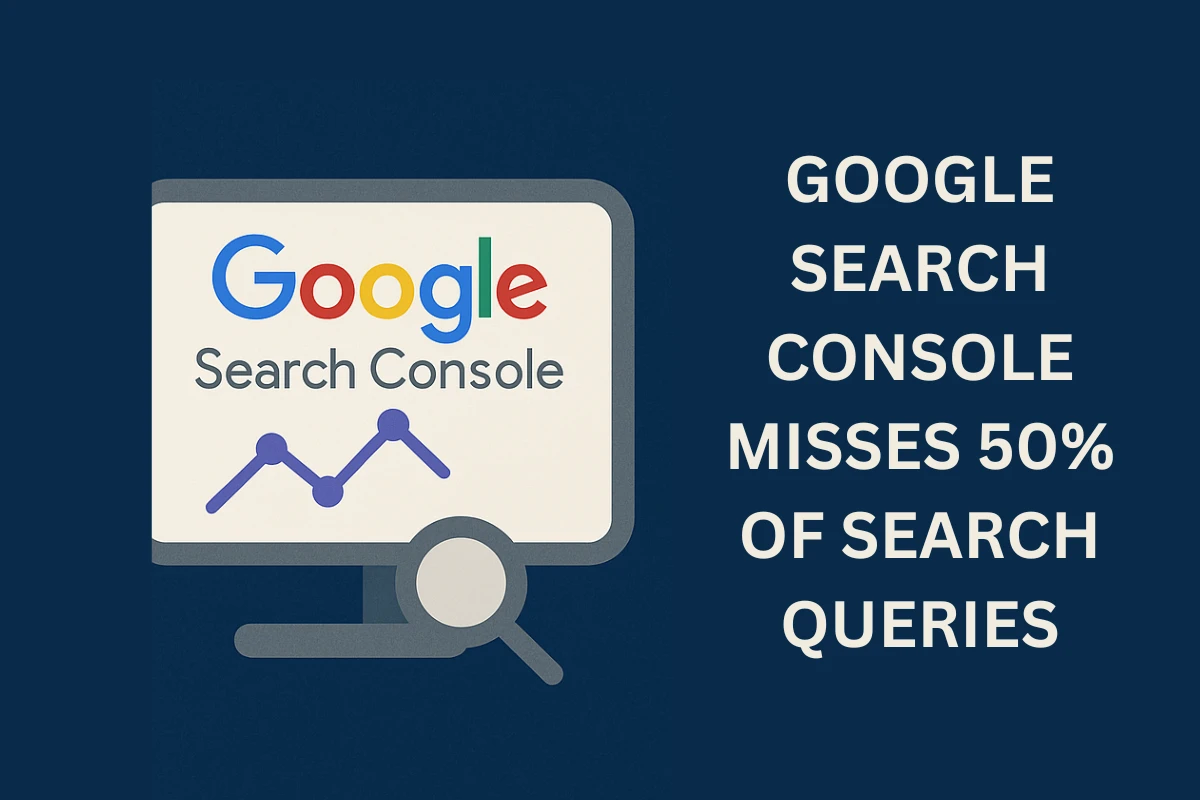Google Search Console Misses Half of Search Queries
A new study from ZipTie has discovered that Google Search Console (GSC) could be underreporting search queries by as much as 50%. This discrepancy means SEO practitioners and marketers receive an incomplete picture of their organic search performance.
Conversational Queries Go Untracked
The research, conducted by Tomasz Rudzki, ZipTie co-founder, points out a significant weakness in GSC’s data: they frequently don’t catch conversational or natural language searches—such as those employed with voice recognition or AI chatbots.
To experiment, Rudzki tested his own website. For several days, he repeated the same conversational Google searches on different devices and accounts. Traffic to his site (affirmed by other analytics tools) followed these queries, but GSC registered no trace of them. “Zero. Nada. Null,” Rudzki explained.
He then had 10 other SEO experts redo the test, and all of them reported the same thing—no trace of those searches in GSC even though traffic was confirmed.
Low Search Volume Can Be the Culprit
The evidence indicates that GSC only shows queries after they reach a certain minimum search volume. Before that point is achieved, those queries—and that historical data—just don’t appear.
As an example, individual cases of iPhone-related questions like:
- “What are the advantages and disadvantages of the iPhone 16?”
- “Do I upgrade to the latest iPhone or continue with Samsung?”
- “How is iPhone 16 compared to Samsung S25?”
Each may get only 10–15 searches a month. But when combined, they signify enormous interest. Alas, GSC does not notice such low volume but collectively significant variations.
Google Answers, But Doesn’t Report
Strangely, while Google seems to recognize and respond to these conversational queries—often showing AI-generated overviews—those same queries remain invisible in GSC reports. In fact, Rudzki’s analysis of 140,000 “People Also Ask” questions showed that 80% triggered AI-generated answers, yet many were absent in GSC data.
“It appears Google can read and respond to question-like queries,” Rudzki said. “But it doesn’t do a great job of reporting them in the very tool marketers use most.”
Why This Matters
Losing half the data means SEO plans could be informed only by half the picture. Content creators could overlook genuine user intent, optimize keyword rather than genuine questions and misinterpret page performance.
It also keeps marketers waiting to find out about upcoming trends—once a query is popular enough to make it into GSC, the competition is already likely to have started.
What Can Be Done?
Because GSC is not revealing the whole picture, marketers should:
Employ the Pages tab rather than the Queries tab in order to view what content is driving traffic in general.
Target complete content answering complete questions, rather than select keywords.
Utilize other tools and techniques to examine conversational search patterns—particularly AI and voice search-led ones.
The Future of SEO: Embracing an Invisible Search Layer
As voice and AI-powered search continues to spread—being used on a regular basis by roughly 20% of the world’s population—the disconnect between how humans search and how Google depicts those searches is growing.
Until Google enhances transparency in GSC, effective SEO will need more encompassing tactics that integrate multiple data points and account for the invisible half of search traffic that continues to drive real engagement.

